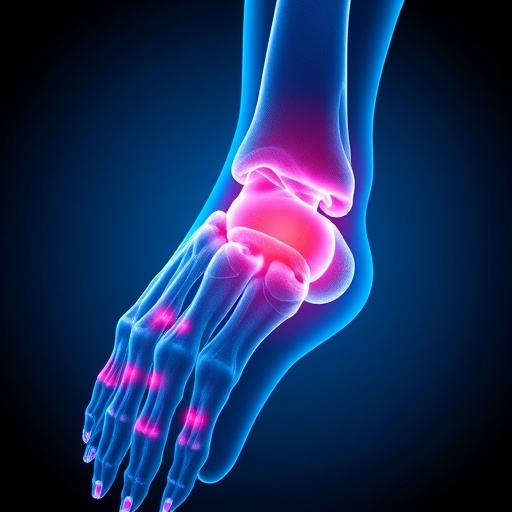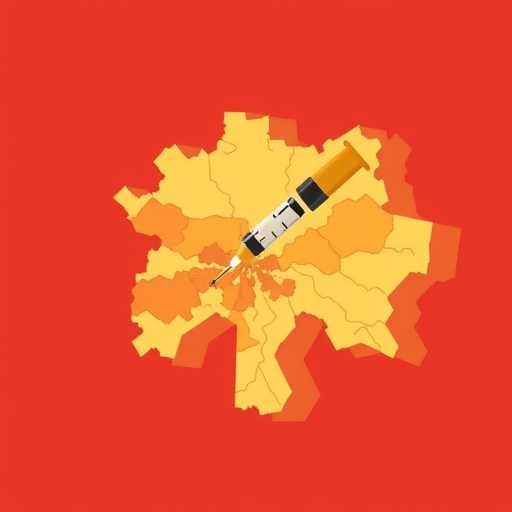
In the relentless quest to unravel the complexities of autoimmune diseases, a groundbreaking study from Kyoto University has provided pivotal insights into rheumatoid arthritis (RA), a chronic condition afflicting millions worldwide. This autoimmune disorder is notorious for causing persistent joint pain, swelling, and eventual irreversible damage, often defying current treatment paradigms. The new research spotlights a previously underappreciated dichotomy within a crucial immune cell population—peripheral helper T cells (Tph cells)—which appear to exist in two distinct forms with separate yet interlinked roles in the disease’s pathology.
Historically, T cells have been recognized as central players in orchestrating immune responses. Among these, Tph cells have gained attention for their accumulation in RA-affected joints and their capacity to exacerbate inflammation. However, the intricacies of their behavior, especially their exact localization and interaction within the inflamed joint microenvironment, remained elusive. The Kyoto research team utilized state-of-the-art single-cell RNA sequencing technology to dissect these cells at an unprecedented resolution, revealing a bifurcation into stem-like Tph cells and effector Tph cells.
Stem-like Tph cells exhibit self-renewing capabilities and maintain a relatively quiescent but primed state. Notably, these cells cluster within specialized immune microanatomical structures called tertiary lymphoid structures (TLSs). TLSs, akin to ectopic lymph nodes, are immune hubs formed in chronically inflamed tissues that facilitate immune cell communication and activation. The presence of stem-like Tph cells within TLSs suggests a niche function, where they proliferate and interact intimately with B cells, another immune cell type implicated in autoimmunity.
.adsslot_ly0KATXvwM{width:728px !important;height:90px !important;}
@media(max-width:1199px){ .adsslot_ly0KATXvwM{width:468px !important;height:60px !important;}
}
@media(max-width:767px){ .adsslot_ly0KATXvwM{width:320px !important;height:50px !important;}
}
ADVERTISEMENT
Intriguingly, the stem-like Tph cells appear to serve as the reservoir and originators of effector Tph cells. Through a maturation process, stem-like cells differentiate into effector counterparts, which then egress from the TLS environment into the surrounding inflamed joint tissue. In stark contrast to their stem-like precursors, effector Tph cells display heightened activation but limited proliferative capacity. They localize predominantly outside the TLSs, where they interact dynamically with various pro-inflammatory cells, including macrophages and cytotoxic T cells, amplifying tissue inflammation and damage.
This discovery sheds light on a continuous supply chain of inflammatory effector cells driven by stem-like Tph cells within TLSs, potentially elucidating why inflammation persists in a substantial subset of RA patients resistant to current therapies. Targeting these stem-like cells therapeutically may interrupt this pathogenic cycle, offering a novel intervention point that could transform treatment outcomes.
Employing spatial transcriptomics, an innovative technology allowing gene expression analysis within intact tissue slices, the investigators mapped the precise anatomical niches of these Tph subsets. This approach provided compelling spatial context, demonstrating the architectural compartmentalization of stem-like versus effector Tph cells and their respective cellular neighbors during RA progression. These spatial insights underscore the importance of microenvironmental cues in dictating immune cell function and fate within chronically inflamed joints.
Further functional assays confirmed the crosstalk between stem-like Tph cells and B cells. In vitro co-culture experiments revealed that this interaction not only drives the differentiation of stem-like Tph cells into their effector form but also activates B cells to produce autoantibodies, a hallmark of RA pathology. This bidirectional activation suggests an amplifying feedback loop fueling persistent inflammation and joint destruction.
These findings represent a paradigm shift in understanding RA immunopathogenesis, highlighting the dualistic nature of Tph cells and their spatial-functional specialization within the joint milieu. Prior models often treated Tph cells as a homogeneous population contributing uniformly to disease, overlooking the nuanced interplay between proliferative potential and inflammatory activity delineated here.
The clinical implications of this research are profound. By identifying stem-like Tph cells as central drivers located within discrete immune niches, new therapeutic strategies could be devised to selectively target these progenitor cells. Such interventions may halt the generation of inflammatory effector cells at their source, potentially improving treatment response rates, especially in patients who currently exhibit refractory disease.
Moreover, this work exemplifies the power of integrating multi-omics technologies—including single-cell genomics and spatial transcriptomics—to unravel cellular heterogeneity and spatial organization within diseased tissues. This holistic approach provides a blueprint for future studies aiming to decode complex immune interactions across various autoimmune and inflammatory disorders.
The research team, led by doctoral student Yuki Masuo alongside Associate Professor Hiroyuki Yoshitomi and Professor Hideki Ueno at Kyoto University’s Institute for the Advanced Study of Human Biology (ASHBi), plans to advance these discoveries into translational applications. Their goal is to develop targeted immunotherapies that can abrogate the pathological activity of stem-like Tph cells without compromising systemic immune function.
Published in the forthcoming August 2025 issue of Science Immunology, this study paves the way for refined immunomodulation strategies tailored to the microanatomical and functional diversity of immune cells within RA joints. As the field moves away from broad immunosuppression towards precision immunotherapy, the identification of discrete cellular subsets underpinning disease persistence is critical.
In conclusion, by delineating distinct subsets of peripheral helper T cells with specialized localization and function within rheumatoid arthritis joints, Kyoto University researchers have illuminated a novel axis of chronic inflammation. Their work unravels the spatial and functional complexity of immune cell interplay that sustains arthritis pathology, offering promising avenues for the development of next-generation treatments aimed at restoring joint health and patient quality of life.
Subject of Research: Human tissue samples
Article Title: Stem-like and effector peripheral helper T cells comprise distinct subsets in rheumatoid arthritis
News Publication Date: August 15, 2025
Web References: http://dx.doi.org/10.1126/sciimmunol.adt3955
Image Credits: ASHBi/Kyoto University
Keywords: Helper T cells, Rheumatoid arthritis
Tags: chronic autoimmune disease insightsimmune cell behavior in RAimmune microenvironment in rheumatoid arthritisjoint damage mechanisms in rheumatoid arthritisKyoto University rheumatoid arthritis studyperipheral helper T cells in joint inflammationrheumatoid arthritis researchsingle-cell RNA sequencing in immunologystem-like Tph cells in rheumatoid arthritisT helper cells role in autoimmune diseasestertiary lymphoid structures in autoimmune diseasesTph cells and disease pathology





